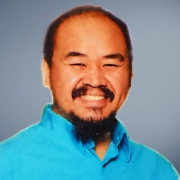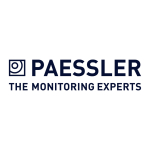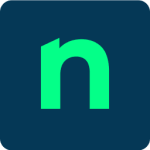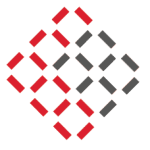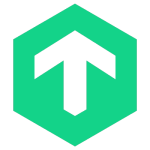What is our primary use case?
It has got a lot of use cases, but in my opinion, it's probably the best full-stack network monitoring management and alerting platform that's out there for routers, switches, firewalls, and non-server infrastructure.
How has it helped my organization?
It makes it a lot easier for our IT teams to have visibility into remote and distributed networks. Once you get your IT team members used to it, when you're having an issue, for example, while trying to SSH to something, they will go to Auvik first just because they have the geographic map, and they have these little dummy-proof exclamation marks. So, there might be an issue here. The way Auvik portrays the network from the outside looking in is like being Zeus on a little cloud. We can see what's going on with all our devices which we couldn't see before without having to log into each device individually, or we had to use a diagram that we made when they were set up and refer to that. Now, we have a live reactive changing diagram that allows our network guys to go straight to the actual device that's causing the network issue somewhere in this region and start troubleshooting that right away versus having to troubleshoot three, four, or five devices in that general area blindly, and then, eventually getting to the device they need to work on. It has saved an insurmountable amount of hours of network outages and down networks. It has also reduced our response times. We are able to get that information really quickly, and we don't have to go back and forth. What used to be a four-hour fix is now done in 30 minutes.
It has been great to allow our teams to focus on high-value tasks and delegate low-level tasks to junior staff. It has been great just because of the integration with our PSA ticketing system and the way we can set triggers, priorities, and levels of urgency with notes and all the other cool features they have there. It allows us to route tickets appropriately and then, they already have little checklists that pop up for common alerts that say, "If it's this and this, try this. If not, escalate to senior staff." It has sped that up quite a bit. Often, there's a lot of noise, and by getting the alerting down right to where there are actionable incidents that come in, it has sometimes added a little extra time for the tier one guys because often there are just too many alerts. You have one device that brings down a whole network, but you get alerts on every single device that's inside that network, whereas you only need to know the one. Sometimes, it's not easy from the face value to know which specific device it's until you get used to the tool and the customer.
Auvik keeping our device inventories up-to-date has helped save us time and money. We don't miss a lot of the warranty and inversion roll-ups, and some of our commitments where we have to do quarterly upgrades of the router, switch, and firewall environment. They are the kind of upgrades that aren't done automatically for anyone because you can't do those in the middle of the day. So, our ability to track assets, models, versions, and even warranty expiration dates, which they pull from public databases automatically for you, is invaluable.
What is most valuable?
They allow for integrations into their platform via API with PSA tools like ConnectWise Manage and ConnectWise Automate. They have a lot of add-on integration and plug-ins for a lot of the big names and IT RMM stacks commonly used in my industry space. These integrations are absolutely valuable. With the integrations into ConnectWise, we are able to automatically create and close tickets across systems. As alerts and new information comes into Auvik, when an issue or a trigger that was alarmed has been resolved, and it detects that it has gone away, based on our threshold, it can talk back to our ticketing system and auto-close it and send a notification. It's phenomenal. You don't have to wait on an email to go to another email, and then that email creates a ticket. It's very useful.
The network visualization is great in terms of overall intuitiveness. They couldn't do any more than doing a coloring book with pop-up pictures and coloring stuff. They made it easy for you to know where to look. They guide you to the right place. I always use the term Windows 85 just because they tried to simplify it so much and make it so easy that it became difficult for people because they are used to doing more steps. They're like, "Wait, that can't be right. That's all I had to do? There have to be more steps." Some of the things are hidden in plain sight, but when you find it once, you're good. The diagrams and the groupings of the sections are very down and out. Like Merkle Tree, they are easy to navigate, and then, they have a lot of cross-referencing hooks inside those sections of the UI that lead you back to the next expected place you'd want to go after making a change in that section. It's nice.
What needs improvement?
The monitoring and management functions or the out-of-the-box functions are fairly easy to use. When you need to tailor an onboarding for a customer who wants different triggers and conditions for alerts that don't come out of the box in their default alert set for certain device types, you can make it happen and create those, but doing so isn't that easy. Luckily, Auvik support is usually the best. They respond very quickly. You can message them right on a chat. You always get someone who knows what they're talking about, and then, they get you in the right direction. From a user perspective, customizing it's not intuitive, but it can be done with their help.
Its asset inventory is amazing. The only thing that they're still lacking is the ability to make it easier to import assets into their system when onboarding. Other than that, exporting and pulling data that is set up in Auvik is very easy, and it has made QBR with customers and things like that a lot of fun.
So, there should be more custom reporting options when importing or exporting. It should have better data ingestion capabilities, and we should be able to import more than just a CSV. They should also improve it in terms of customization for customer tenants and reporting and onboarding options for migrating from non-Auvik systems or no network monitoring systems into Auvik. It's still a very manual process even with the discovery. The onboardings are probably the longest part.
There is a hidden or unspoken bottleneck that I would like to see improved. When there are 800 to 1,000 devices in one subtenant, that is huge performance segregation. Generally, you're not going to have a lot of customers that have that much, but the solution is to create different sub tenants and such, but it's more of a hassle than it's worth. In the future, I would like to see if they could find a way to break through that bottleneck for the namespace tenants or for the customer tenants to where I could have all the customer network devices in one tenant. They could even be sectionalized inside the tenant, or there could be a way to mask the US1, US2, Customer-1, Customer-2, or whatever namespace in a way that they all also show up in the same portal tenant customer organization, and they all tie into our PSA tools with same API integration. I would like to see that happen. That's been the biggest hurdle for our enterprise customers and deployments because when you're first doing discovery and you start scanning, it starts pulling in everything like printers, computers, phones, and all the stuff you don't need. It adds up to 1,000 really quickly, and then the UI or refresh rate on the tool cripples drastically. That's the biggest thing, but it's not something that can't be overcome either by the options and suggestions they provide as of today. In those kinds of situations, it just requires a little bit of extra work to set up the additional tenants and get everything integrated.
For how long have I used the solution?
I've been using it for about five years.
What do I think about the stability of the solution?
What do I think about the scalability of the solution?
I couldn't speak on their actual infrastructure because of the hosted solution. So far, I've seen just massive fast scaling from their infrastructure side just based on namespaces alone. I haven't seen any limitations personally other than the bottleneck I have, but that's not a limitation when there's a solution to create satellite tenants that will talk to each other for the same customer. If that were to continue on, I haven't seen anything that would stop me from creating unlimited 1,000 device namespaces per customer all tied into the same functions of their stack.
How are customer service and support?
I would rate their support a 10 out of 10. It's like they look out for me when I message support. For the last five years, every time I messaged them, they sent me the best guy they had, or that's the experience I've had. I have had nothing but a great experience with their support. I never had to get them on the phone either. It has always been through the chat, which is amazing.
How would you rate customer service and support?
Which solution did I use previously and why did I switch?
We only use Auvik for routers, switches, and firewalls or just the network. We don't use it for any servers. We use a combined stack for that piece. Before we moved to Auvik, we used to use two extra tools, and then Auvik replaced those two. Now, we're just down to using two main tools to manage the entire customer infrastructure. We got Auvik and ConnectWise Automate.
In the past 13 years, I've used SolarWinds, NetNat, and Kaseya Traverse. We have used a good handful of managed service provider-focused tools. I used LabTech's very limited network monitoring management tool before they got bought and the name was changed to ConnectWise and ConnectWise Automate, but essentially, LabTech was the same tool as Automate. Anyone in the MSP business over in Houston was either using the Kaseya RMM tool or they were using LabTech's RMM tool to manage their customers. They mainly excelled at just workstations and server management, but they had some limited network functionality or network monitoring and management that you could do. Outside of that, this is the first one that would do it all. Usually, you had to get a vendor-specific one. You'd be doing a bunch of different vendor tools. You'd have a Cisco tool, you'd have a Fortinet tool, or you'd have a SonicWall tool. Each one of those tools monitored and managed just that class of product. It's nice to have one that does it all.
In terms of comparison of Auvik's cloud-based solution versus other on-prem network monitoring solutions, the only thing they have is collectors. They got the collectors, and all they do is that they relay information via HTTPS back to the AWS. AWS does all the magic with the databases.
How was the initial setup?
Deployments are extremely straightforward. My response would be biased because I have been using it for a while, but I don't see anything that someone who doesn't use it regularly might see as a problem or hurdle. I've worked with the support and used the tool so often. So, I know the little caveats where if something is wrong with the way it's talking to a device, if I wait 30 seconds and set the device to unmanaged and then set it back to managed again, I can reset it and reconnect the service. So, it's super easy. Their level of support is quick and very knowledgeable because their support doesn't work with any non-technical people because all of their customers are IT teams. You could probably log into a tenant, and if you have no idea what you're doing, just pop in there in message chat, and you can probably have them walk you through it at a fast enough rate to get you up in line and managing the day-to-day tasks for the customer in that tenant portal in just a matter of a week or less, depending on the size of the network. It could be a matter of a couple of hours.
We have our own process. We streamlined the onboarding process. We took the bits and pieces out of the Auvik documentation that we found to be more relevant and valuable during the initial customer discussions. When you're dealing with a lot of customers who also have internal IT departments, you have to lay out a lot of different concerns, questions, and things that evolve around their specific operations that you just can't predict from the get-go. So, we have our own process where it picks out the protocols that are relevant, the level of permissions that we need, the service accounts that we need, etc. We set those requirements and expectations in our scope with the customer, and they sign off on it that they get us this information within a certain timeframe. That helps speed up the process out of the box. Assuming everything is perfect and we have all of the access and all the keys to the kingdom of someone we're trying to deploy out of the box, we should have no problem deploying it very quickly. That's because all the credentials that we need to manage those devices are automated by an Auvik service account for logins, remote sessions, and SNMP. If all those are plugged in before we deploy the collector, and as we deploy the collector, it does all that magic for us. That's the automation piece involving connecting, discovering, pulling information, and wrapping everything together.
What about the implementation team?
I got a new guy who works with me now, but for the last three years, it has been solely me deploying Auvik for every customer and internally for our operations as well. I deploy it, configure it, and then I hand it off to Ops to maintain it, and they handle it from there.
In terms of maintenance, it doesn't require much maintenance. In the past few years, there were some instances where they couldn't automatically update collectors from certain versions to certain versions when you passed a certain point. So, you just have to go in and update or just redeploy collectors for customers, which is due to the nature of how they are set up. You could have one that just breaks. You can spin off a brand new one in less than 30 minutes, and you're back to where you were before.
What was our ROI?
Every time we onboard a new customer to provide our IT services, there's a kickoff call that just says, "Hey, we're doing this." Auvik provides us the ability to perform discovery as soon as we have keys to their infrastructure.
There has been a reduction in our mean time to resolution (MTTR). From incident to resolution, it has probably cut that time down in half for the operations side.
What's my experience with pricing, setup cost, and licensing?
The prices change based on your partnership with them and based on the bulk amount that you buy and the account rep you're talking to. It depends on negotiations and the number of customers you have.
It's absolutely worth the money. I would probably charge more if I were them. They don't charge you for anything that's not a router, switch, or firewall controller, or a network device. So, you can throw anything like servers and ESX hosts. You can throw network storage and all that stuff in there, and they have functionality in there for you to build out, monitor, and manage those as well, which you don't get charged for. You only get charged per device for a switch, router, or firewall, which is nice. You can have a collector for a customer, and it's just a minimal fee for the tenant. It's pretty neat. You can deploy as many collectors as you want to talk to that tenant for the customer on the fly and do discoveries. We also handle some emergency requests such as, "We need to figure out what we have on our network because we got ransomware, and we need to make sure all of our devices and all of our assets have the new antivirus. We're supposed to have 6,000 devices, but we're only showing this many." There have been times when we've literally just used the tool for discovery on a customer to collect a full report of assets and then used that to fix another whole different type of issue and provide solutions for more revenue to additional projects for that engagement. We use it ad hoc. We use it for month-to-month management of infrastructures. Now, we use it for discoveries and emergency projects where we need to collect a lot of information very quickly when we don't have any other IT at the other end to provide information on situations.
Which other solutions did I evaluate?
When I got hired with Computex, now Calian, they hired me because they didn't know what to do with Traverse. I made the decision and met with the engineering team. I was certainly 90% of the reason for the decision for them to move away from Kaseya's Traverse tool to Auvik's tool. I made that decision when I came on because I had a lot of background in it, and they had an acquisition where they had that tool for half of their businesses they were providing IT for, and then, they had Traverse. I convinced them to get away from Traverse because it wasn't a good tool, and then we moved over to a tool that did what we needed.
I had to do a lot of training. I had to host a lot of training and calls and some webinars for our NOC team, but once we got a hang of it, we were able to display it while the customer was at our NOC. We could display the active live network monitoring diagrams on our dashboards with all our other systems. It gives everyone a warm feeling when they can look over and see what's going on.
What other advice do I have?
I would advise first figuring out what you're trying to accomplish. If you are trying to ad hoc or duct tape other tools, rethink. Auvik performs and shows the most value when it becomes your sole tool for all of your network monitoring and management and alerting. If you're trying to ad hoc, duct tape, or throw in just for a feature or a filler for another product, you're just going to run into more headache. You only need Auvik to manage all of those things. If you're looking to Auvik for server management, workstation management, it's possible, but it's not built for that. So, make sure that it's for network devices only. It's not really designed to manage storage and hypervisors and remote access. It's not a day-to-day help desk support tool for you to hop on to user workstations and troubleshoot from that standpoint.
If you want just another monitoring solution, Auvik can do it, but Auvik's magic is the fact that it's a full stack. It's not just monitoring. It's full network management, remote access, and preventative maintenance. It's a full RMM tool. So, if you're looking for strictly an alerting tool for your network, you'd be wasting some very well-engineered features on the product by going with Auvik just for that.
Its ease of use isn't too important for us, but it depends on the kind of use because we have layered access and levels of skill sets that are allowed to do certain things in it. From a broader perspective, 90% of the engineers that work for a managed services provider and 90% of the guys on our support desk aren't going to be there changing anything. It's just going to be the project team that sets it up, onboards it, and configures it. Once that process is standardized for us, there are only minor tweaks, based on the customer type, when we set up new clients. It becomes pretty streamlined. The only time that the ease of use helps is in the beginning when you first start using the tool itself. Once you've been a partner with Auvik, you've onboarded a few customers, and you've dug your way in and out, and around it, and you do a couple hundred after that, it's not as relevant.
It hasn't helped reduce repetitive, low-priority tasks through automation. They don't have much automation in the platform itself. The only automated thing that they do is to monitor conditions, and then the routing of the alerts, who they go to, and how those are handled. In terms of automation of maintenance on the network, there isn't any function like that in Auvik that I'm aware of. It's mostly just analytics monitoring and a remote access tool.
I would rate it a nine out of ten.
Disclosure: PeerSpot contacted the reviewer to collect the review and to validate authenticity. The reviewer was referred by the vendor, but the review is not subject to editing or approval by the vendor.



